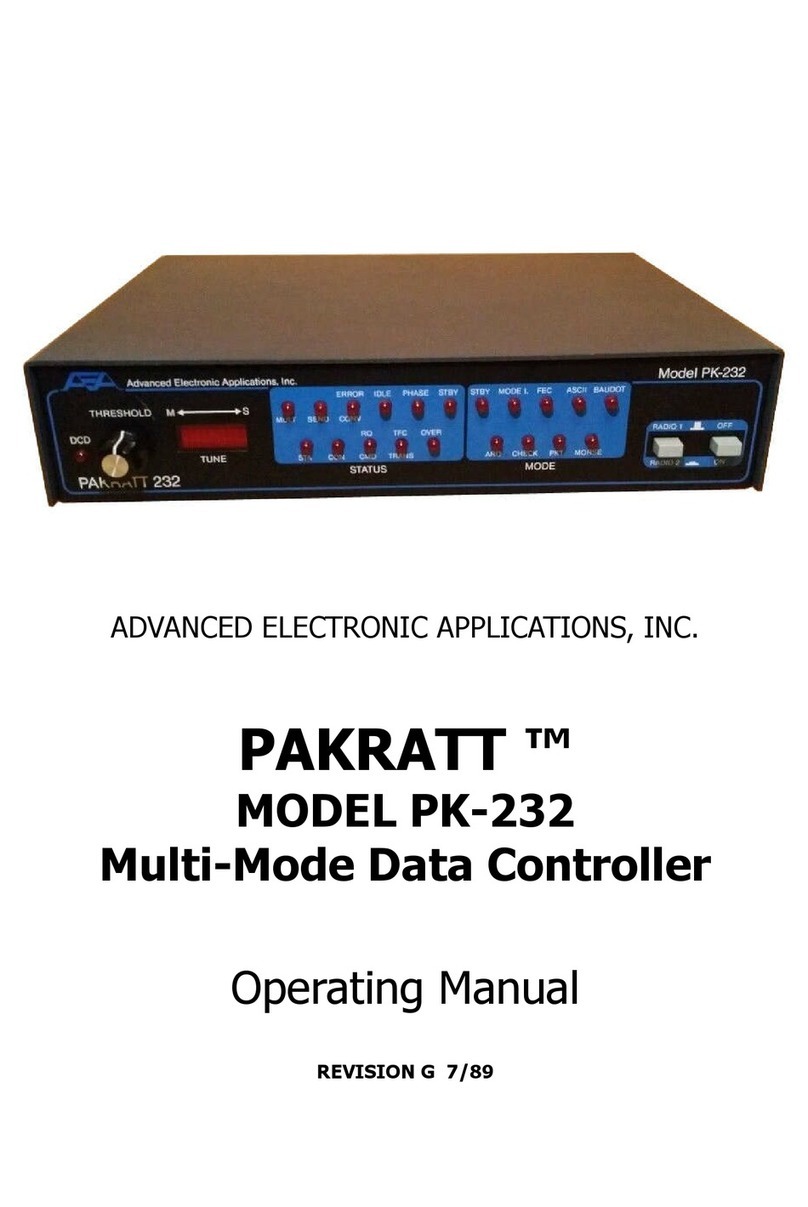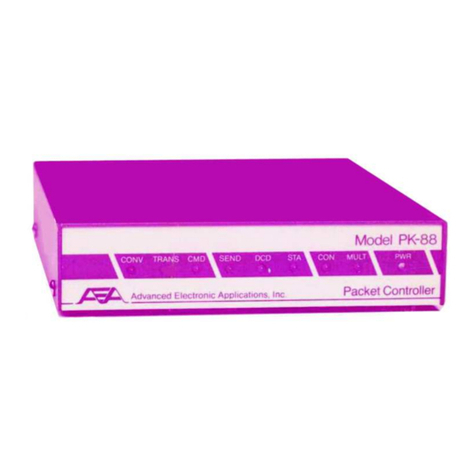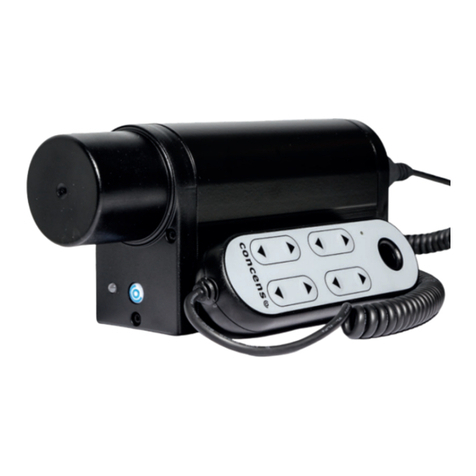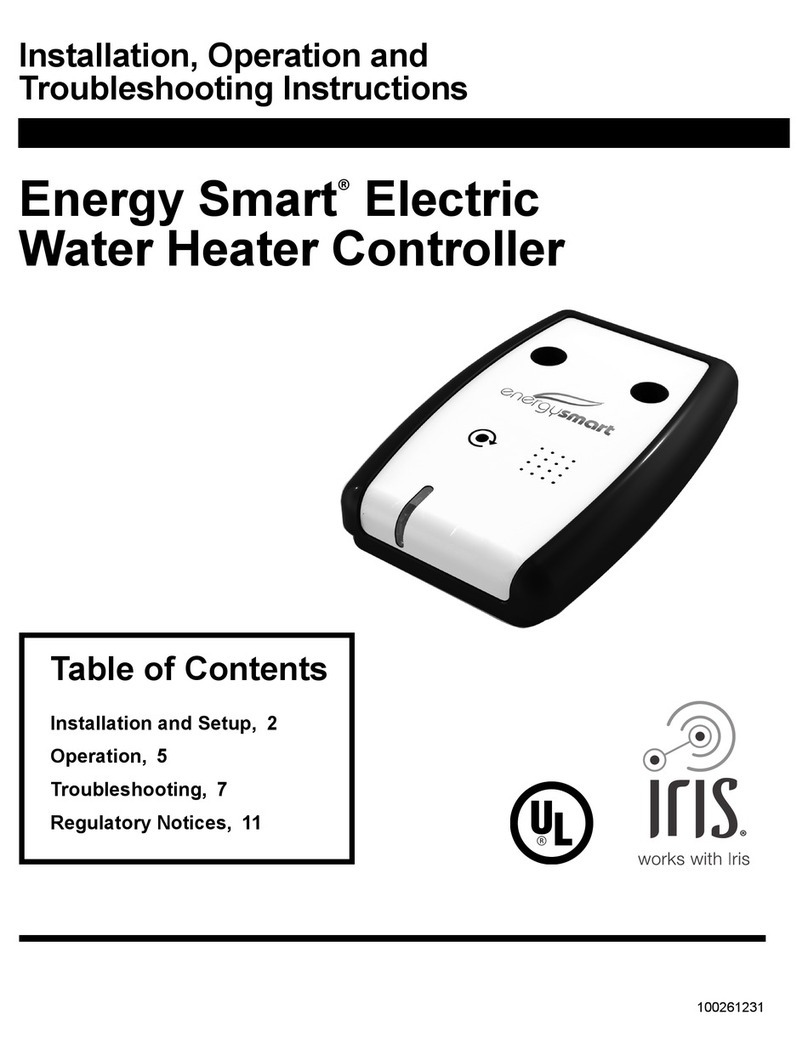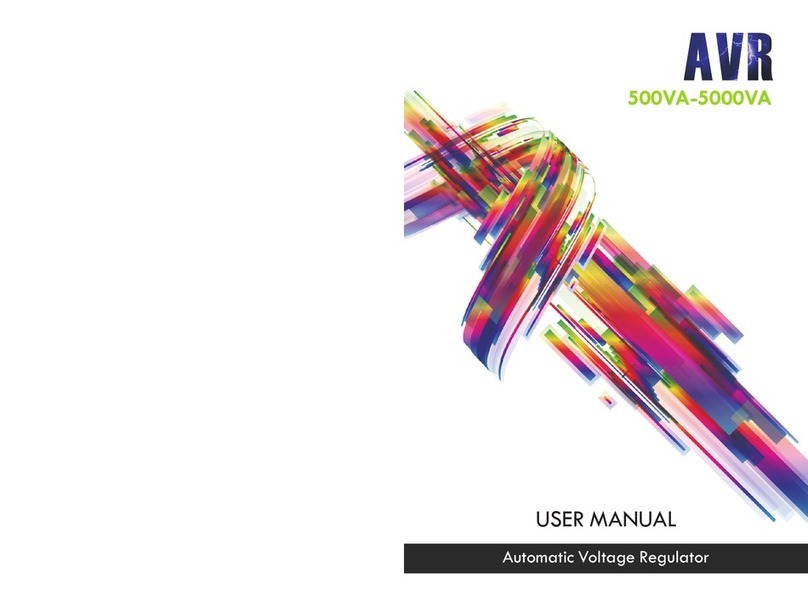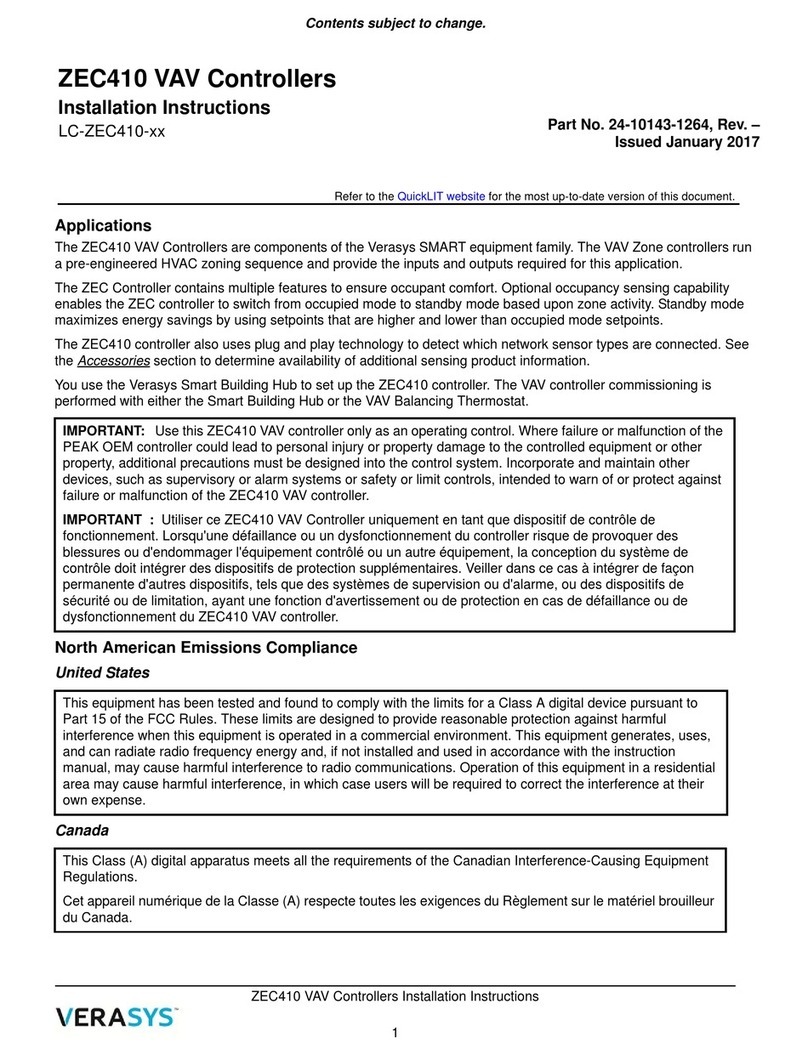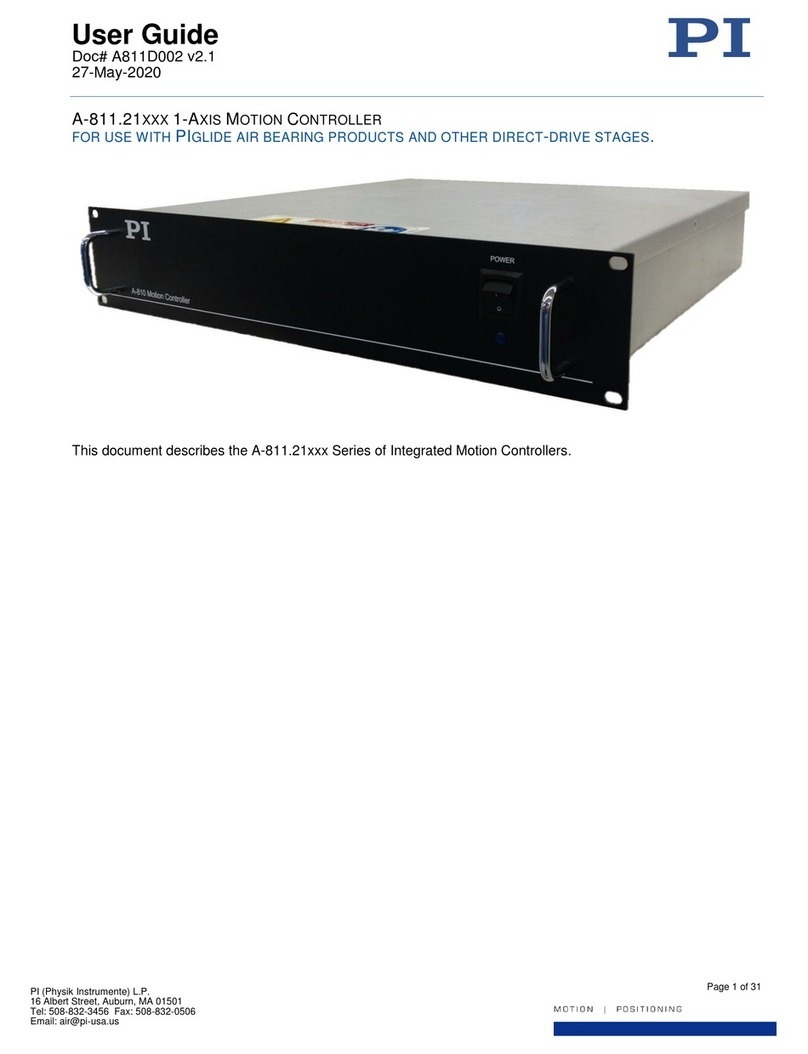Advanced Electronic Applications PK-88 User manual


OPERATING MANUAL
MODEL PK-88 PACKET CONTROLLER
ADVANCED ELECTRONIC APPLICATIONS, INC.
Rev. D 3/90
PROPRIETARY INFORMATION
Reproduction, dissemination or use of information contained herein for
purposes other than operation and/or maintenance is prohibited without
written authorization from Advanced Electronic Applications, Inc.

Getting Started with the PK-88
Congratulations and thank you for your purchase of the AEA PK-88 Packet Data
Controller. The following is intended to help get you started and "on the air" with
the PK-88 quickly and easily.
The PK-88 operating Manual is filled with complete information on all commands and
operating modes. This doesn't mean you have to read it cover to cover before using
your PK-88. Most of the information you will need to connect your computer or terminal
and radio to the PK-88 can be found in Chapter 2 of the PK-88 Operating Manual.
If you are using one of our programs such as PC-Pakratt or PK-FAX for the IBM-PC and
compatibles, COM-PAKRATT for the Commodore 64 and 128 or MacRATT for the Macintosh,
then you should start with the Installation section of the Program manual. After you
have the program installed and running on your computer, then Chapter 2 of the PK-88
Operating Manual will describe how to connect the PK-88 to your computer and
transceiver.
AEA's programs such as PC-Pakratt simplify the way you enter commands to the PK-88.
This means that some of the sections of the PK-88 Manual that tell you to enter a
command in a certain manner will not apply. When using one of our programs on your
computer, sections 2.5, 2.6 and 2.7 of the manual can be skipped.
In general, if you are using one of AEA's programs such as PC-Pakratt, PK-FAX,
COM-PAKRATT, or MacRATT, the manual that comes with the program should answer most
questions. The PK-88 Operating Manual should only be needed as a reference when
specific Hardware or Command information is sought.
On the other hand, if you are using a Dedicated Terminal or Terminal Program on your
computer, you should carefully follow the set-up procedure outlined in all of Chapter
2 of the PK-88 Operating Manual. Sections 2.11 and 2.12 of the Manual describe how to
connect the PK-88 to several different kinds of computers which may be especially
helpful.
You will not need any of this information to get your PK-88 up and running, but you
may want to skim through the Addendum for the latest information on the PK-88
operating firmware.
NOTE TO PC-Pakratt USERS:
In order to run the PK-88 with PC-Pakratt, your PC-Pakratt
disk must contain a file PCPAKRA87.CFG. Contact AEA at
206-775-7373 if you have any questions.

PK-88 OPERATING MANUAL PREFACE
PREFACE TO THE PK-88 PACKET CONTROLLER MANUAL
Please read this preface in its entirety. It contains information about how
to receive warranty service, the current software installed in your PK-88,
our software update policy and how to get involved in the digital radio
community.
RF Interference Information To User
This PK-88 has been certified under Subpart J of Part 15 of the FCC rules.
This equipment generates and uses radio frequency energy. If it is not
installed and used properly, that is, in strict accordance with AEA's
instructions, it may cause interference to radio and TV reception. It has
been type tested and has been found to comply with the limits of a Class B
computing device in accordance with the specifications in Subpart J of Part
15 of the FCC rules, which are designed to provide reasonable protection
against such interference in a residential installation. However, there is no
guarantee that interference will not occur in a particular installation. If
this equipment does cause interference to radio or TV reception, which can be
determined by turning the PK-88 on and off, the user is encouraged to try and
correct the interference using one or more of the following measures:
Reorient the antenna of the device receiving interference.
Relocate the computer with respect to this device.
Plug the computer into a different outlet so the computer and the
deviceareondifferentbranchcircuits.
If necessary, the user should consult the dealer or an experienced radio/TV
technician for additional suggestions. The user may find 'How to Identify and
Resolve Radio-TV Interference Problems,' a booklet prepared by the FCC,
helpful.
PLEASE USE SHIELDED CABLE FOR ALL RS-232 CONNECTIONS
As part of our continuing program of product improvement, we reserve the
right to make changes in this product's specifications. Changes will be made
periodically to the information in this document. These changes will be
incorporated in new issues of this manual.
There may be technical inaccuracies or typographical errors in this document.
Please address comments and corrections to AEA Incorporated, PO Box C2160,
Lynnwood, WA 98036-0918. AEA reserves the right to incorporate and issue any
information thus supplied in whatever manner it deems suitable without
incurring any obligations whatever.
FIRST ISSUE (MAY 1988)
Copyright Advanced Electronic Applications, Inc., 1986, 1987, 1988. All
rights reserved. No part of this manual may be reproduced or used in any form
or by any means without prior written permission from the copyright owner.
i PK88-3

PK-88 OPERATING MANUAL PREFACE
Welcome
Congratulations on your purchase of another fine AEA product.
PLEASE COMPLETE AND RETURN the Warranty Registration Card packed with your PK-88
system.
WE WILL NOT BE ABLE TO FURNISH YOU WITH ANY UPDATES TO THE SOFTWARE IF YOU DO NOT
RETURN THE ABOVE DOCUMENT. AS NEW FEATURES ARE DEVELOPED, WE ARE SURE YOU WILL WANT TO
BE ABLE TO OBTAIN THEM.
If you call for any kind of customer assistance, we will ask for the serial number on
your warranty card. Because of the numerous situations in which our product is used by
an unauthorized third party, we MUST verify that you are the licensed user. We may
choose to call you at the phone number listed in our records to verify your identity.
THANK YOU for your patience.
Product Update Policy
From time to time we will make available updates to the design of our products. These
sometimes are made available to the user who has previously purchased its products. We
can only tell you about these updates if we have your warranty card. PLEASE SEND IT IN
If you have not already done so. Future versions of software for the PK-88 will most
likely become available. We will make these updates available, if possible.
In Case of Trouble
Application and troubleshooting assistance may be had by calling AEA during our 8-12,
1-4:30 working hours in Seattle WA. Ask for the Customer Service Department. The phone
number is (206) 775-7373. Please have your product serial number, and version date of
the software available. The version date is on the first screen that comes up when you
turn on the PK-88. We will also need to know the nature of any other equipment
connected to the PK-88.
Please attempt to solve problems locally or ask an AEA dealer. Substituting a PK-80,
PK-87, PK-232 or other TNC that you know is working properly for your questionable one
is a diagnostic technique that will check out the rest of your station. Also try
running your PK-88 in another station.
Many of the AEA products that are sent to us for repair are in perfectly good order
when we receive them. Please perform whatever steps are applicable from the
information on installation and troubleshooting.
If you call for assistance, please have your PK-88 configured and operating near the
phone. Our service technician may ask you to perform certain keyboard routines to aid
in diagnosis. if you have a voltmeter handy, you might have the PK-88 open so you can
report measurements to the service technician.
PLEASE DO NOT RETURN THE PK-88 TO US WITHOUT FIRST CONTACTING US FOR PERMISSION. WE
WOULD LIKE THE OPPORTUNITY TO TROUBLESHOOT THE PROBLEM OVER THE PHONE FIRST, SAVING
YOU BOTH TIME AND MONEY.
ii PK88-4

PK-88 OPERATING MANUAL PREFACE
If you return the PK-88 to us by United Parcel Service or other freight
carriers, the PK-88 must be sent to our street address, not to our post
office box number. Our street address is:
AEA. Inc.
2006 196th St. SW
Lynnwood, WA 98036
USA
We will need YOUR street address for proper return shipment. Be sure to
include your shipping or mailing address.
For domestic customers, United Parcel Service Surface (Brown Label) takes 7-8
days; Blue takes 2-3 days and Red is an expensive overnight service. Send the
PK-88 in a way that it can be traced if we cannot verify receipt of shipment.
We suggest United Parcel Service, Federal Express or insured postal shipment.
If the PK-88 is still under the original owner's warranty, AEA will pay the
cost of the return shipment. The current policy is that it will be returned
UPS Brown if received Brown or by US Mail; returned UPS Blue if received Blue
or by overnight service; or returned as the owner states in his letter if he
furnishes the return cost for the method he selects.
If the PK-88 is out of warranty, it will be returned by UPS Brown COD unless:
1) It was received UPS Blue/Red in which case it will go back UPS Blue COD,
or 2) If you designate billing to VISA or MASTERCARD, or 3) you enclose a
BLANK personal check endorsed 'not to exceed ... $,' or 4) you specify some
other method of return.
We will typically service the product in two or three days if we have all the
facts. It may take longer if we must call you. PLEASE, if you send it in,
include a letter stating the problem and where you can be reached. If you can
be reached by phone in the evening on the East Coast, let us know where. Our
current rate for out-of-warranty service is $40/hour with a 3/4 hour minimum.
Parts and shipping are extra.
AEA is not responsible for damage such as caused by lightning,
nonprofessional alterations, poor storage/handling, etc.
Should your warranty card not be on file at AEA, you need to send the proof
of purchase date to receive warranty service. Typically a copy of your bill
of sale from an AEA dealer will suffice.
The warranty is for the original owner only and is not transferable.
iii PK88-5

PK-88 OPERATING MANUAL PREFACE
INTRODUCTION
Welcome to the exciting world of digital Amateur Radio! You've joined the ranks of the
fastest growing mode in Amateur Radio since the FM repeater.
Your AEA PK-88 Packet Controller is the connection between your computer and radio.
The PK-88 performs all the 'magic' of establishing data and text communications
between your station, as well as many other communication facilities equipped for
digital communications.
With packet radio you'll have a 'private channel' while sharing a frequency with other
packet stations; you'll be able to 'read the mail' from other packet stations, log on
to computer-based 'bulletin board' or 'mailbox' systems, handle message traffic - in
short, you're now equipped to enjoy the advantages of digital communications and
error-correcting radio techniques in your ham shack.
Your new AEA PK-88 is the heart of your digital radio station. The PK-88's system
software is derived from the original TAPR TNC; it presents many of the advanced
features of that design, coupled with significant enhancements based on the experience
gained by thousands of TAPR-equipped amateur packet stations worldwide.
This manual is your guide into the realm of Amateur Packet Radio.
Join a Packet Club - Subscribe To Newsletters - Join a Voice Net
Join a packet radio club - they exist in all states as of this writing. You might also
subscribe to the ARRL publication 'Gateway,' which describes all the 'goings on' in
packet radio, and to the TAPR 'Packet Status Register,' which describes the
technically interesting happenings in the movement. There are many voice nets on VHF
and HF; they usually meet weekly. They are usually dedicated to making the newcomer
feel at home.
Acknowledgment
AEA, Inc. gratefully acknowledges the Tucson Amateur Packet Radio Corporation, Tucson,
AZ, for permission to include excerpts from their TNC-2 documentation in this manual,
and to Mike Chepponis and Phil Karn for their specifications for the KISS code.
Norm Sternberg (W2JUP) and Barbara Argilo developed, wrote and edited this Operating
Manual on Tandy 1000SX computers with IBM's Displaywrite 3 V1.1 program.
Our special thanks to Mike Lamb (N7ML), Dr. Alan Chandler (K6RFK), John Gates (N7BTI),
Steve Stuart (N61A), Andy Madsen (KB7B), Joe Schimmel (W2HPM), Jeff Jacobsen (WA7MBL),
Hank Oredsen (WORLI), Brian Riley (KA2BQE), Phil Karn (KA9Q) and Mike Chepponis (K3MC)
for their help.
AEA, Inc. dedicates itself to the advancement of digital radio communications.
iv PK88-6

PK-88 OPERATING MANUAL TABLE OF CONTENTS
TABLE OF CONTENTS
CHAPTERI–INTRODUCTION
Paragraph Page
1.1 Introduction ................................................... 1-1
1.1.1 Scope ................................. ..........................1-1
1.1.2 General .........................................................1-1
1.1.3 Application .....................................................1-1
1.2 Specifications ..................................................1-2
1.2.1 Description .....................................................1-2
1.2.2 Modem Characteristics ...........................................1-2
1.2.3 Processor System ................................................1-2
1.2.4 Input/Output Connections ........................................1-3
1.2.5 Controls and Indicators .........................................1-3
1.2.6 General .........................................................1-3
1.3 System Components ...............................................1-4
1.4 Input/Output Devices ............................................1-4
1.5 System Transmitter/Receiver Performance Requirements ............1-4
CHAPTER 2 - INSTALLATION
2.1 Preliminary Information .........................................2-1
2.1.1 Equipment Required ..............................................2-1
2.1.2 Precautions .....................................................2-1
2.2 Installation ....................................................2-1
2.2.1 Power Connections ...............................................2-1
2.2.2 Radio Input and Output Connections ..............................2-2
2.2.3 Computer Connections ............................................2-2
2.3 Controls and Indicators .........................................2-3
2.4 Status LEDs .....................................................2-3
2.5 Serial Port Configuration .......................................2-3
2.6 Screen Displays .................................................2-4
2.6.1 Echoes ..........................................................2-4
2.6.2 Line Feeds and Carriage Returns .................................2-4
2.6.3 Screen Width ....................................................2-4
2.6.4 Display Speeds ..................................................2-4
2.7 System Setup and Verification ...................................2-5
2.8 Radio Connections and Setup .....................................2-7
2.8.1 PTT (Push-to-Talk) Configuration ................................2-8
2.8.2 Data Carrier Detect (DCD Pin 8) Jumper JP6 ......................2-8
2.8.3 FM Installation and Adjustment ..................................2-9
2.8.4 SSB Installation and Adjustment .................................2-11
2.9 Command List Displays ...........................................2-14
2.9.1 Display Complete Command List ...................................2-14
2.9.2 Display Partial Command Lists ...................................2-14
2.9.3 Display Asynchronous Port Parameters ............................2-14
2.9.4 Display Special Characters ......................................2-15
2.9.5 Display Identification Parameters ...............................2-15
2.9.6 Display Link Parameters .........................................2-16
2.9.7 Display Monitor Parameters ..................................... 2-16
2.9.8 Display Timing Parameters .......................................2-17
TOC-1 PK88-7

PK-88 OPERATING MANUAL TABLE OF CONTENTS
CHAPTER 2 - INSTALLATION (Continued)
Paragraph Page
2.10 Immediate Commands .............................................. 2-17
2.10.1 Unlisted Commands ............................................ 2-17
2.11 Detailed Connections for Specific Computers ..................... 2-18
2.11.1 Computers with Specific Serial Interfaces .................... 2-18
2.11.2 Commodore 64, 64C, 128, Vic 20 ............................... 2-18
2.11.3 IBM PCjr ..................................................... 2-18
2.11.4 Tandy Color Computer ......................................... 2-19
2.11.5 Tandy Model 100/102, Kyocera KC-85 and NEC 8201 .............. 2-19
2.11.6 Other Computers with 25-pin RS-232-C Ports ................... 2-19
2.11.7 Other Computers with Non-standard Serial Ports ............... 2-20
2.12 Terminal (Modem) Software for Specific Computers ................ 2-20
2.12.1 Apple Macintosh .............................................. 2-20
2.12.2 Apple II, II+, IIE and IIC ................................... 2-21
2.12.3 Commodore 64, 64C, 128, Vic 20 ............................... 2-21
2.12.4 IBM PCjr ..................................................... 2-21
2.12.5 Tandy Color Computer ......................................... 2-21
2.12.6 Tandy Model 100/102, Kyocera KC-85 and NEC 8201 .............. 2-21
2.12.7 IBM PCs, 'Clones' and True Compatibles . ............. ........ 2-21
2.13 PBBS, Electronic Mail and File Server Program Compatibility ..... 2-22
2.13.1 Data Carrier Detect (DCD) Requirements ....................... 2-22
CHAPTER 3 - BASIC OPERATION
3.1 Exploring the PK-88 Program ..................................... 3-1
3.2 LED Status and Mode Indicators .................................. 3-1
3.2.1 Status Indicator LEDs ........................................... 3-1
3.2 2 The DCD LED - Data Carrier Detect ............................... 3-1
3.2.3 LEDs at System Start ............................................ 3-1
3.3 Commands ........................................................ 3-2
3.3.1 Entering Commands ............................................... 3-2
3.3.2 Command Responses ............................................... 3-2
3.3.3 Error Messages .................................................. 3-3
3.3.4 Command Names ................................................... 3-3
3.3.5 Default Values .................................................. 3-4
3.3.6 Parameters, Arguments and Values ................................ 3-4
3.3.7 Using Commands Without Arguments ................................3-6
3.4 Controller Messages .............................................3-6
3.4.1 General Messages ................................................3-6
3.4.2 Command Mode Error Messages .....................................3-7
3.4.3 Link Status Messages ............................................3-8
3.5 Special Keyboard Control Codes ...................................3-10
3.6 Clear String Command . ...........................................3-10
3.7 Detailed Command Descriptions ...................................3-10
TOC-2 PK88-8

PK-88 OPERATING MANUAL TABLE OF CONTENTS
CHAPTER 3 - BASIC OPERATION (Continued)
Paragraph Page
3.8 General Operating Information ................................... 3-11
3.8.1 Formatting Commands .......................................... 3-11
3.8.1.1 Screen Line Length ........................................ 3-11
3.8.1.2 Monitor Echo .............................................. 3-11
3.8.1.3 Line Feed ................................................. 3-11
3.8.1.4 Carriage Return ........................................... 3-11
3.8.1.5 Backspace and Delete ...................................... 3-12
3.9 Escape Functions ................................................ 3-12
3.10 Send Time of Day ................................................ 3-12
3.11 Clear Transmit Buffer ........................................... 3-12
CHAPTER 4 - OPERATING MODES
4.1 General Information ............................................. 4-1
4.1.1 Change Radio Link Data Rate .................................. 4-1
4.1.2 Station Identification ....................................... 4-2
4.1.2.1 MYCALL Required at System Start-up ........................ 4-2
4.1.2.2 Substation Identifiers (SSIDs) ............................ 4-2
4.1.2.3 Automatic Identification .................................. 4-2
4.2 Set Up Loopback Test Circuit .................................... 4-2
4.2.1 'Connect' and 'Disconnect .................................... 4-3
4.2.2 LED Status and Mode Indicators ............................... 4-3
4.2.3 LEDs at System Start or Reset ................................ 4-3
4.3 System Loopback Test Connection ................................. 4-3
4.3.1 Connect Message ................................................. 4-3
4.3.2 Send Packet Character ........................................ 4-4
4.3.3 Return to Command Mode ....................................... 4-4
4.3.4 Return to Converse Mode ...................................... 4-4
4.3.5 Terminate the Link - Disconnect .............................. 4-4
4.4 Your First Packet Communication ................................. 4-5
4.4.1 System Cable and Switch Check ................................ 4-5
4.4.2 Starting the Communication ................................... 4-5
4.4.3 What If? ..................................................... 4-6
4.5 Automatic Operation ............................................. 4-6
4.5.1 Beacon Operation ............................................. 4-6
4.5.2 Will You Accept Connections? ................................. 4-7
4.5.3 Are You Available to Chat? ................................... 4-8
4.5.4 Do You Want to Transmit? ..................................... 4-8
4.6 Digipeater Details .............................................. 4-9
4.6.1 Are You a Digipeater? ........................................ 4-9
4.6.2 Do You Want to be a Digipeater? .............................. 4-10
4.7 Unsuccessful Connections and Retries ............................ 4-11
4.7.1 Retries While Connected ...................................... 4-11
4.8 Monitoring Activity on the Channel .............................. 4-11
4.8.1 Monitoring Other Stations .................................... 4-12
4.8.2 Monitoring Digipeaters - The MRPT Command .................... 4-13
4.8.3 Monitoring Other Stations While Connected .................... 4-13
TOC-3 PK88-9

PK-88 OPERATING MANUAL TABLE OF CONTENTS
CHAPTER 4 - OPERATING MODES (Continued)
Paragraph Page
4.9 Selective Monitoring ............................................ 4-13
4.9.1 The MFROM Command ........................................... 4-14
4.9.2 The MTO Command ............................................. 4-15
4.9.3 The MCON Command ............................................ 4-16
4.9.4 The MFILTER Command ......................................... 4-16
4.9.5 The MHEARD Monitor Buffer ................................... 4-16
4.9.6 MSTAMP The Monitor Time-Stamp Command ....................... 4-17
4.9.7 DAYTIME Set the Real-Time Clock ............................. 4-17
4.10 Packet Formatting ............................................... 4-18
4.10.1 PACLEN - Long or Short? ..................................... 4-18
4.10.2 Backspace and Delete ........................................ 4-18
4.10.3 Cancel Line ................................................. 4-18
4.10.4 Redisplay ................................................... 4-19
4.10.5 XON/XOFF, START/STOP - Display Flow Control ................. 4-19
4.10.6 The PASS Character .......................................... 4-19
4.10.7 More Carriage Returns and Line Feeds ........................ 4-19
4.11 Multiple Connections ............................................ 4-20
4.11.1 Default Multiple-Connect Conditions ......................... 4-20
4.11.2 The USERS Command - Multiple-Connect Active ................. 4-20
4.11.3 CHSWITCH Character Selection ................................ 4-20
4.11.4 The CHCALL Command - Display Multiple-Connect Call Signs .... 4-21
4.11.5 The CHDOUBLE Command - Display Doubled Characters ........... 4-21
4.11.6 General Hints on Multi-Connect Operation .................... 4-21
4.12 MailDrop Operation .............................................. 4-22
4.12.1 RAM Space for Message Storage ...............................4-22
4.12.2 System Commands .............................................4-22
4.12.2.1 Start and Stop MailDrop Operation ........................4-22
4.12.2.2 Local Logon and Verification .............................4-22
4.12.2.3 Monitor MailDrop Operation ...............................4-23
4.12.3 Caller Prompt ...............................................4-23
4.12.4 Caller and SysOp MailDrop Commands ..........................4-24
4.12.4.1 B (BYE) ..................................................4-24
4.12.4.2 K n (KILL n) .............................................4-24
4.12.4.3 L (LIST) .................................................4-24
4.12.4.4 R n (READ n) .............................................4-25
4.12.4.5 S callsign (Send callsign) ...............................4-25
4.12.5 Sample Session - The Caller's Point of View .................4-25
4.12.5.1 Connect and Logon ........................................4-26
4.12.5.2 LIST Messages ............................................4-26
4.12.5.3 READ Messages ............................................4-26
4.12.5.4 KILL Messages ............................................4-26
4.12.5.5 SEND Messages ............................................4-27
4.12.5.6 Other People's Messages ..................................4-27
4.12.5.7 Multiple Message Commands ................................4-27
4.12.5.8 Incorrect Commands .......................................4-28
4.12.5.9 Sorry, Wrong Number! .....................................4-28
4.12.5.10 Log Off and Disconnect ...................................4-28
4.12.6 Sample Session - The MailDrop SysOp's Point of View .........4-28
TOC-4 PK88-10

PK-88 OPERATING MANUAL TABLE OF CONTENTS
CHAPTER 5 - COMMAND SUMMARY
Paragraph Page
5.1 Introduction ....................................................5-1
5.1.1 Entering Commands ...........................................5-1
5.1.2 Command Responses ...........................................5-1
5.1.3 Error Messages ..............................................5-2
5.2 Command List ....................................................5-2
5.2.1 Command Names ...............................................5-3
5.2.2 Default Values ..............................................5-3
5.3 Parameters, Arguments and Values: ...............................5-3
5.3.1 Parameters ..................................................5-4
5.3.1.1 BooleanParameters.......................................5-4
5.3.1.2 NumericParameters.......................................5-4
5.3.1.3 TextorStringParameters................................5-4
5.3.2 Using Commands Arguments Without Arguments ..................5-5
5.4 Controller Messages .............................................5-6
5.4.1 General .....................................................5-6
5.4.2 Command Mode Error Messages .......................... ...... 5-7
5.4.3 Link Status Messages ........................................5-8
5.5 Clear String Commands ...........................................5-10
5.6 Specific Commands ...............................................5-10
8BITCONV .......................................................5-11
ACRDISP ........................................................5-11
ACRPACK ........................................................5-12
ADDRESS ........................................................5-12
AFILTER ........................................................5-13
ALFDISP ........................................................5-13
ALFPACK ........................................................5-14
AWLEN ..........................................................5-14
AX25L2V2 .......................................................5-15
AXDELAY ........................................................5-15
AXHANG .........................................................5-16
BBSMSGS ........................................................5-16
BEACON ......................................................... 5-17
BKONDEL ........................................................ 5-18
BTEXT .......................................................... 5-19
CALIBRA ........................................................ 5-20
CANLINE ................................................. ...... 5-21
CANPAC ......................................................... 5-22
CASEDISP ....................................................... 5-23
CBELL .......................................................... 5-23
CFROM .......................................................... 5-24
CHCALL ......................................................... 5-25
CHDOUBLE ....................................................... 5-26
CHECK .......................................................... 5-27
CHSWITCH ....................................................... 5-28
CLKADJ ......................................................... 5-28
CMDTIME ........................................................ 5-29
CMSG .......................................................... 5-30
TOC-5 PK88-11

PK-88 OPERATING MANUAL TABLE OF CONTENTS
CHAPTER 5 - COMMAND SUMMARY (Continued)
Paragraph Page
COMMAND ........................................................ 5-30
CONMODE ........................................................ 5-31
CONNECT ........................................................ 5-32
CONOK .......................................................... 5-33
CONPERM ........................................................ 5-33
CONSTAMP ....................................................... 5-34
CONVERSE ....................................................... 5-34
CPACTIME ....................................................... 5-35
CR ............................................................. 5-35
CSTATUS ........................................................ 5-36
CTEXT .......................................................... 5-37
DAYTIME ........................................................ 5-38
DAYSTAMP ....................................................... 5-39
DELETE ......................................................... 5-39
DFROM .......................................................... 5-40
DICIPEAT ....................................................... 5-41
DISCONNE ....................................................... 5-41
DISPLAY ........................................................ 5-42
DWAIT .......................................................... 5-43
ECHO ........................................................... 5-44
ESCAPE ......................................................... 5-44
FLOW ........................................................... 5-45
FRACK .......................................................... 5-46
FULLDUP ........................................................ 5-46
HBAUD .......................................................... 5-47
HEADERLN ....................................................... 5-47
HELP ........................................................... 5-48
HID ............................................................ 5-48
HOST ........................................................... 5-49
HPOLL .......................................................... 5-49
ID ............................................................. 5-50
ILFPACK ........................................................ 5-50
I0 ............................................................. 5-51
K .............................................................. 5-51
KISS ........................................................... 5-52
MAILDROP ....................................................... 5-53
MAXFRAME ....................................................... 5-54
MBELL .......................................................... 5-55
MBX ............................................................ 5-56
MCON ........................................................... 5-57
MDCHECK ........................................................ 5-58
MDIGI .......................................................... 5-59
MDMON .......................................................... 5-59
MDPROMPT ....................................................... 5-60
MEMORY ......................................................... 5-60
MFILTER ........................................................ 5-61
MFROM .......................................................... 5-62
MHEARD ......................................................... 5-63
TOC-6 PK88-12

PK-88 OPERATING MANUAL TABLE OF CONTENTS
CHAPTER 5 - COMMAND SUMMARY (Continued)
Paragraph Page
MONITOR ........................................................ 5-64
MONITOR ON/OFF ................................................. 5-65
MPROTO ......................................................... 5-65
MRPT ........................................................... 5-66
MSTAMP ......................................................... 5-66
MTO ............................................................ 5-67
MYALIAS ......................................................... 5-68
MYCALL ......................................................... 5-69
NEWMODE ........................................................ 5-70
NOMODE ......................................................... 5-70
NUCR .......................................................... 5-71
NULF .......................................................... 5-71
NULLS .......................................................... 5-72
PACLEN ......................................................... 5-73
PACTIME ........................................................ 5-74
PARITY ......................................................... 5-74
PASS ........................................................... 5-75
PASSALL ........................................................ 5-76
PERSIST ........................................................ 5-77
PPERSIST ....................................................... 5-78
RAWHDLC ........................................................ 5-78
REDISPLA ....................................................... 5-79
RELINK ......................................................... 5-79
RESET .......................................................... 5-80
RESPTIME ....................................................... 5-80
RESTART ........................................................ 5-80
RETRY .......................................................... 5-81
SENDPAC ........................................................ 5-81
SLOTTIME ....................................................... 5-82
SQUELCH ........................................................ 5-82
START .......................................................... 5-83
STOP .......................................................... 5-83
TBAUD .......................................................... 5-84
TCLEAR ......................................................... 5-84
TIME .......................................................... 5-84
TONE .......................................................... 5-85
TRACE .......................................................... 5-86
TRANS .......................................................... 5-87
TRFLOW ......................................................... 5-87
TRIES .......................................................... 5-88
TXDELAY ........................................................ 5-89
TXFLOW ......................................................... 5-89
UNPROTO ........................................................ 5-90
USERS .......................................................... 5-90
XFLOW .......................................................... 5-91
XMITOK ......................................................... 5-91
XOFF .......................................................... 5-92
XON .......................................................... 5-92
TOC-7 PK88-13

PK-88 OPERATING MANUAL TABLE OF CONTENTS
CHAPTER6-TROUBLESHOOTING
Paragraph Page
6.1 Introduction ................................................... 6-1
6.2 General Tests .................................................. 6-1
6.2.1 Power Supply ................................................... 6-1
6.2.2 Obvious Problems ............................................... 6-2
6.2.3 Assembly Problems .............................................. 6-2
6.2.4 Cabling Problems ............................................... 6-2
6.3 Specific Symptoms .............................................. 6-2
6.3.1 Symptom: PK-88 appears dead .................................... 6-2
6.3.2 Symptom: Transmitter cannot be keyed ........................... 6-4
6.3.3 Symptom: Transmitted signals not copyable by other stations ..... 6-4
6.3.4 Symptom: Received signals not copyable ......................... 6-5
6.4 Terminal Interface Troubleshooting ............................. 6-5
6.4.1 Symptom: PK-88 does not communicate with the terminal .......... 6-5
6.4.2 Symptom: PK-88 signs on with mutilated data .................... 6-6
6.4.3 Symptom: PK-88 does not respond or accept commands ............. 6-6
APPENDICES
APPENDIX A PK-88 COMMAND LIST SUMMARY
APPENDIX B WARRANTY
APPENDIX C TTL HEADER INSTALLATION INSTRUCTIONS
APPENDIX D SCHEMATIC DIAGRAM & PARTS PICTORIAL
APPENDIX E SPECIFIC RADIO CONNECTIONS
APPENDIX F PK-88 REVISION SUPPLEMENT 16-MAY-89
APPENDIX G COMMONLY ASKED QUESTIONS
SPECIALNOTESTOAEASOFTWAREUSERS
APPENDIX H NET/ROM MODIFICATION
APPENDIX I LITHIUM BATTERY
PK880M Rev. B 8/88 TOC-8 PK88-14

PK-88 OPERATING MANUAL INTRODUCTION
CHAPTER 1
INTRODUCTION
1.1 Introduction
The PK-88 Operating Manual describes the general characteristics and operation
of your PK-88 Packet Controller. This Operating Manual will help you to
install, adjust and operate your system.
1.1.1 Scope
The Operating Manual provides detailed information on installation and
operation of the PK-88. The manual describes the PK-88's features, system
components and basic operation on Packet Radio. Information on theory of
operation, hardware and software descriptions, protocols and troubleshooting
instructions is also available.
1.1.2 General
The PK-88 can be used with any standard communications terminal or computer
equipped with an RS-232C ASCII serial data port and an appropriate
communications program or terminal emulator. For information on operation with
nonstandard interfaces or terminals, please contact the manufacturer.
1.1.3 Application
The PK-88 Packet Controller is a digital link between your radio and your
computer or terminal. The PK-88 provides all decoding, encoding and
transmitter control routines needed to send and receive packet radio. You can
use your computer or any ASCII data terminal with the same communications
program or terminal emulator that you use with a telephone line modem.
1-1 PK88-15

PK-88 OPERATING MANUAL INTRODUCTION
1.2 Specifications
As part of its program of product improvement, the manufacturer reserves the
right to change this product's specifications. Changes will be made to the
information in this document and incorporated in revisions to this manual.
Specifications are subject to change without notice.
1.2.1 Description
The Model PK-88 is an asynchronous PAD (Packet Assembler/Disassembler) or data
controller that includes a built-in modem for packet radio operation. The
PK-88 hardware HDLC system converts serial, asynchronous, ASCII data to the
internationally accepted AX.25 packet radio protocol via an EIA standard
RS-232 serial port. In addition, a Host mode, raw HDLC and KISS ('Keep It
Simple, Stupid') TNG protocols are available for applications other than AX-25
protocols,
Operating Modes: Packet Radio per AX.25, half- or full-duplex.
MailDrop-personalmailboxsystem
HostModewithRawHDLCandKISSTNCprotocolfor
servicewithTCP/IPandspecializedapplications.
1.2.2 Modem Characteristics
Modulator/Demodulator: AMD 7910 'World Chip' modem.
Dataformat: Serial,asynchronous
Modem Tones: Bell 103 and Bell 202
Transmitter:
Modulation method: Binary, phase-coherent NRZI FSK
Frequency accuracy: Bell 202 (mark) +/- lHz
Allothers(mark)+/-0.4Hz
Harmonics: 45 dB below fundamental, single tone
Receiver:
Demodulationmethod: DifferentialFMdetection
Output Level: 5 to 100 millivolts RMS, adjustable by
internalcontrol
1.2.3 Processor System
Protocol conversion: Zilog Z-80 microprocessor
RAM: 32 kilobytes
ROM: Up to 48 kilobytes of ROM may be used
Hardware HDLC: Zilog 8530 SCC
1-2 PK88-16

PK-88 OPERATING MANUAL INTRODUCTION
1.2.4 Input/Output Connections
Radio Interface: Eight-pin microphone connector
Input/Output Lines Receive audio
Transmit audio
Push-To-Talk (PTT)
External squelch input
Ground
External Modem Interface: Pins 13 through 17 of Connector Jl
TTL Input/Output Lines Receive data (RXD)
Transmit data (TXD)
Transmit Clock (TXC)
Data Carrier Detect (DCD)
Ground
Terminal Interface: Standard RS-232C 25-pin DB25 connector
Input/Output Lines RS-232C (CCITT V.24/V.28) with full
handshake (hardware and software)
Terminal Data Rates Auto-baud selection of 300, 1200, 2400,
4800, and 9600 BPS. TBAUD adds 45, 50,
57, 75, 100, 110, 150, 200, 600 and
19,200 BPS terminal rates.
1.2.5 Controls and Indicators
Front Panel Controls: Power Switch
Status and Mode Indicators: CONV, TRANS, CMD, SEND, DCD, STA, CON,
MULT,PWR
1.2.6 General
Power Requirements: +13VDC (12 to 16 VDC) at 500 mA.
Internallyfused,withreverse-polarity
protection.
Mechanical: 7.5inches by 6.05 inches by 1.5 inches
(19.05mmby15.4mmby3.8mm)
Weight2pounds5ounces(1.05kg)
Environmental:
AmbientTemperature: Operating:0Cto+55C
Storage:-40Cto+60C
1-3 PK88-17

PK-88 OPERATING MANUAL INTRODUCTION
1.4 System Components
The PK-88 Packet Controller package contains the following items:
• One PK-88 Packet Controller
• Power cable with single 3.5-mm coaxial connector
• Operating Manual
• Two DIP Bypass Headers for TTL Serial Interface Compatibility
1.5 Input/Output Devices
The PK-88 can be used with any standard ASCII data terminal or computer
equipped with an RS-232C serial data port and a communications program or
terminal emulator. Data and control signals are exchanged between the PK-88
and the computer or terminal at standard RS-232C (CCITT V.24/V.28) levels.
Your computer and terminal program and their associated tape, disk and printer
1/0 devices provide the means to store messages received and retrieve messages
for transmission. Although highly desirable, these peripheral or 1/0 devices
are not needed for PK-88 operation.
Note InthisOperatingManual,'computer'and'terminal'meanthesame
thing - the keyboard and monitor or printer with which you
communicate with the PK-88.
1.6 System Transmitter/Receiver Performance Requirements
Most modern radio transceivers are capable of excellent packet radio
performance. Radio switching and other delays can be compensated by parameter
value adjustments to the PK-88.
The PK-88 provides software-controlled timing variations that permit operation
with almost all HF and VHF/UHF radios in general use today.
1-4 PK88-18

PK-88 OPERATING MANUAL INSTALLATION
CHAPTER 2
INSTALLATION
2.1 Preliminary Information
This section contains instructions for a 'generic' installation and system
checkout to install and verify the PK-88's operation with both VHF-FM and HF
SSB radios.
2.1.1 Equipment Required
A complete PK-88 Packet Controller system consists of the PK-88 and a 12 to
16-volt DC power supply, a computer, a terminal emulator or communication
program for the computer, a radio transceiver or receiver-transmitter
combination and its power supply.
Your PK-88 Packet Controller is furnished with the cables required for
connection to your radio and to an external power supply. You must add the
microphone connector required by your radio, the power supply and the RS-232
cable that connects the PK-88 to your computer.
RAM battery backup is provided by two internal AA batteries. (user supplied
and installed)
2.1.2 Precautions
We strongly recommend that all RS-232 cables and connectors be made with the
best commercial quality shielded materials, and that careful and correct
grounding and bonding procedures be observed in the installation of the radio
equipment being used with the PK-88.
2.2 Installation
The following sections describe the connectors and their connections to your
computer and your radio.
2.2.1 Power Connections
Power is connected to the PK-88's rear-panel coaxial power receptacle from any
well regulated 12-volt DC power supply (12 to 16 VDC) capable of supplying at
least 600 milliamperes. An optional wall adapter power supply can be used.
0Besureyourpowersupplycanfurnishtherequiredcurrentwith
aripplevoltageoflessthanonevoltpeaktopeak.
0Besureyouconnectthepositivevoltage to the center pin of the
coaxialpowerplug.
0 Check the supplied cord to determine which lead is positive.
If you accidentally invert the power cable, an internal fuse will open to
protect the PK-88 from reverse-voltage damage. Note that the 0.1 mfd bypass
capacitor Cl may be damaged. If polarity reversal does occur, open the PK-88,
replace the internal fuse and capacitor Cl with identical components,
2-1 PK88-19
Other manuals for PK-88
1
Table of contents
Other Advanced Electronic Applications Controllers manuals
Popular Controllers manuals by other brands
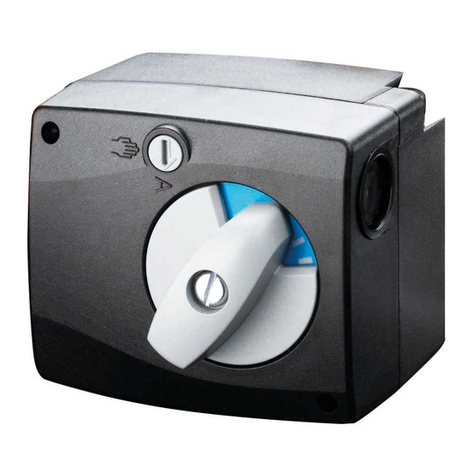
oventrop
oventrop NR 24 Installation and operating instructions
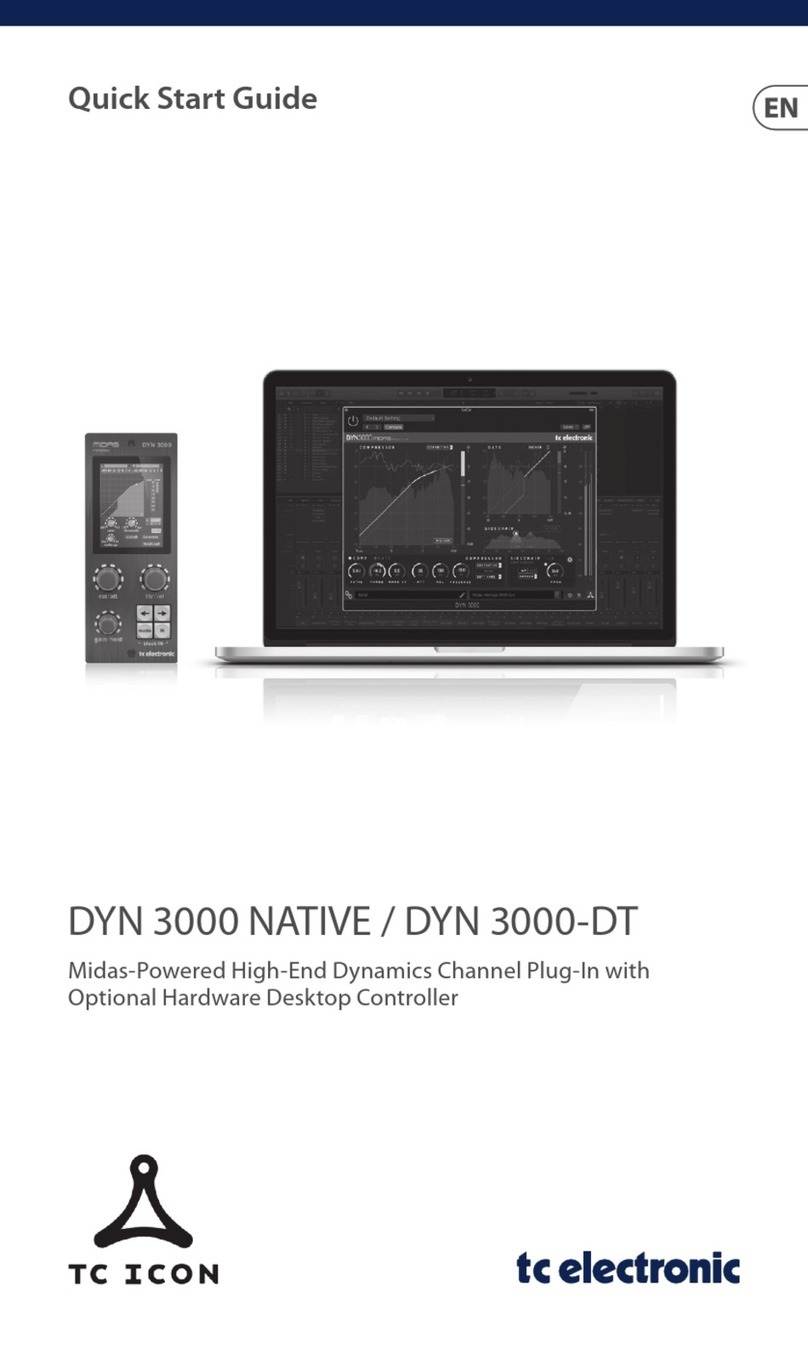
TC Electronic
TC Electronic DYN 3000 NATIVE quick start guide

Parker Pneumatic
Parker Pneumatic BSP Series Setting instructions

Haiwell
Haiwell H04DT user manual
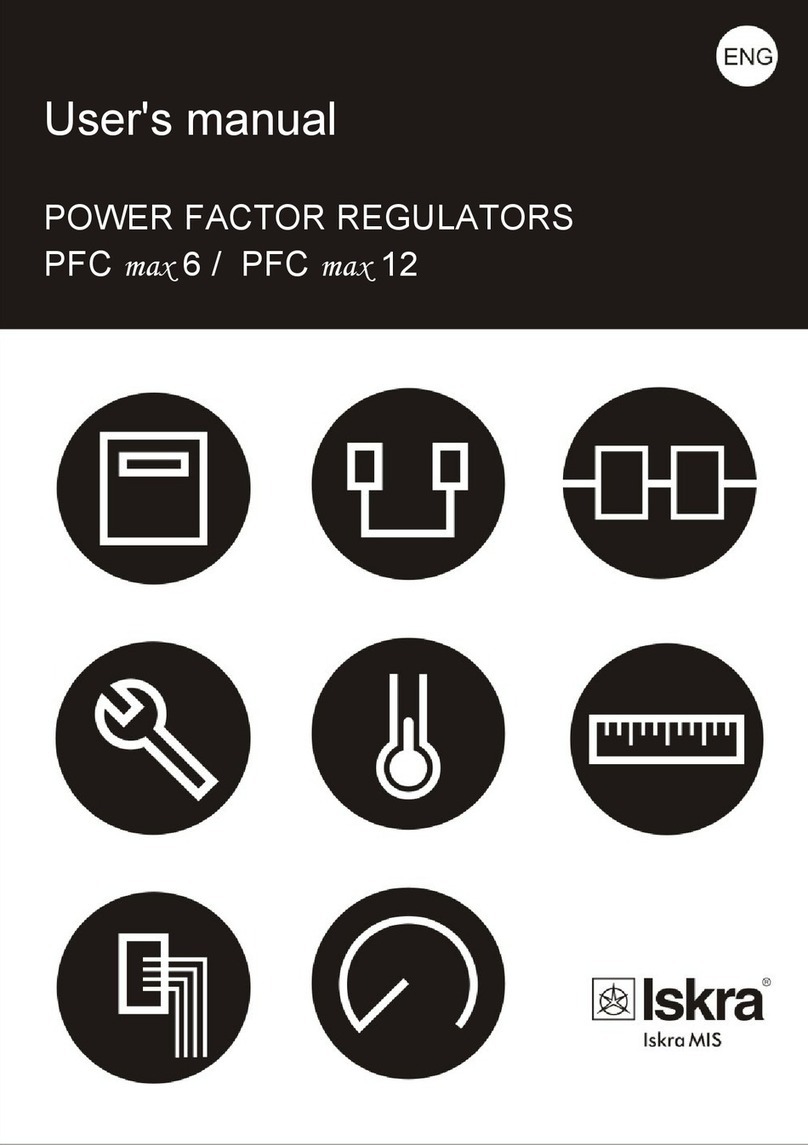
Iskra
Iskra PFC max 6 user manual
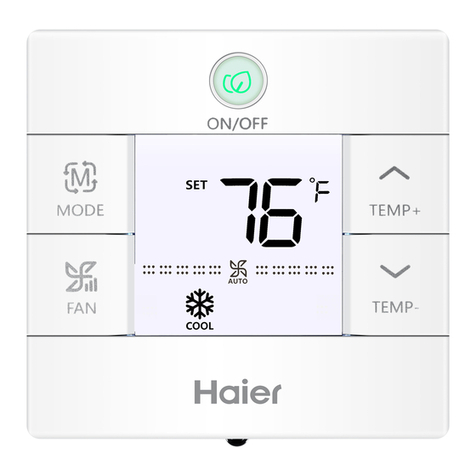
Haier
Haier QACT17A Installation and operation manual
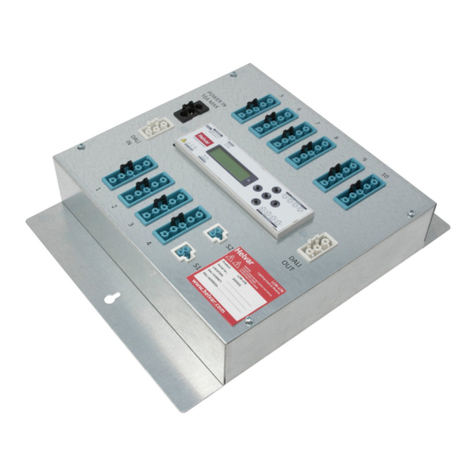
HELVAR
HELVAR INTELLIGENT LCM-478 installation guide
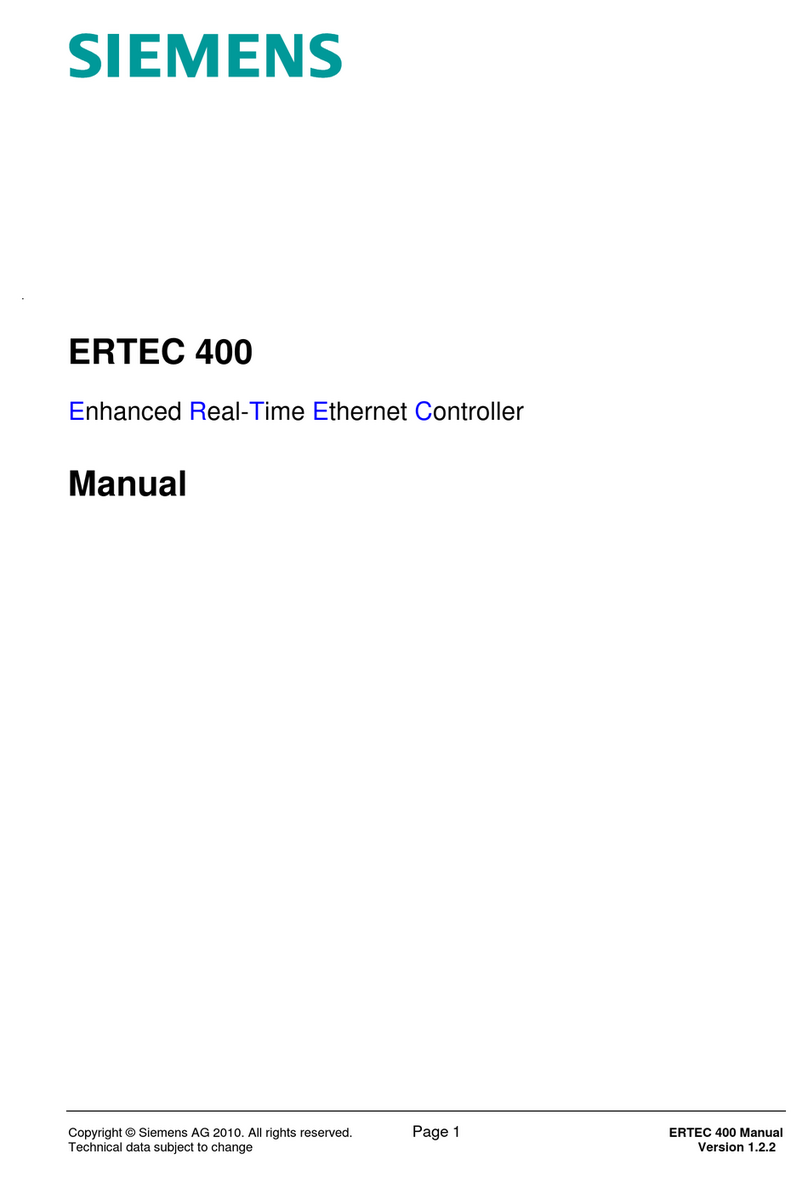
Siemens
Siemens Ertec 400 manual
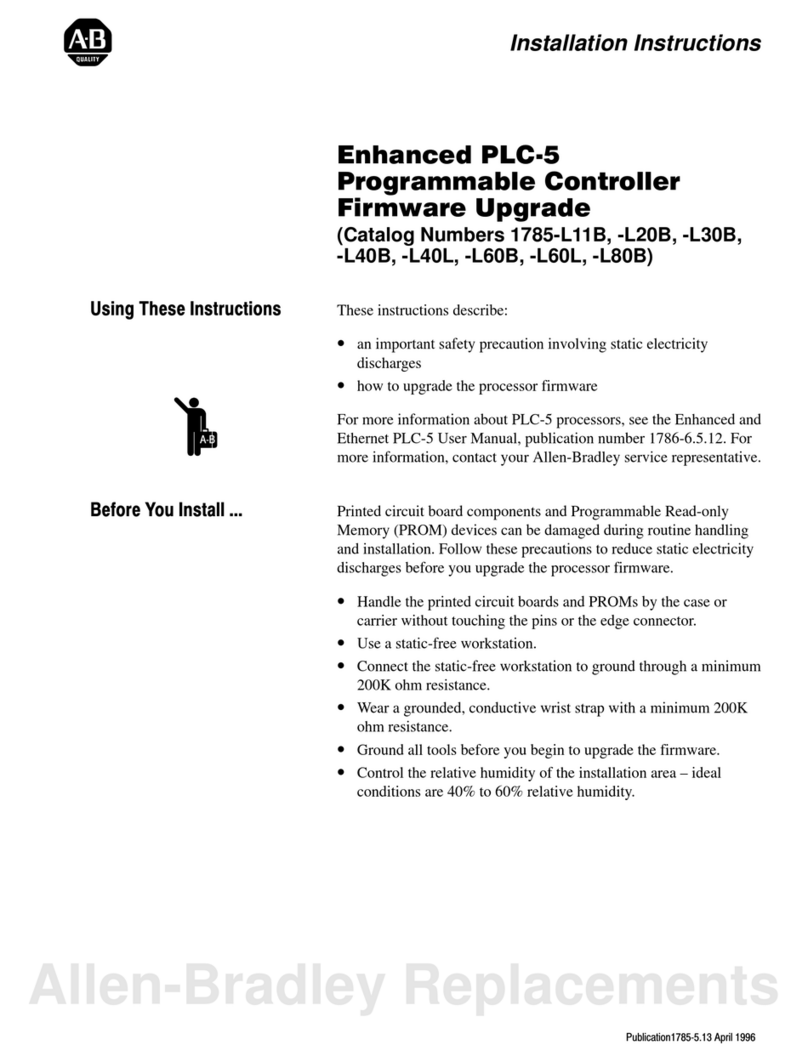
Allen-Bradley
Allen-Bradley PLC-5 series installation instructions
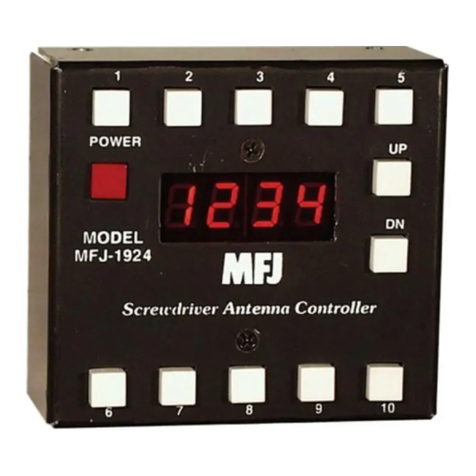
MFJ
MFJ MFJ-1924 instruction manual
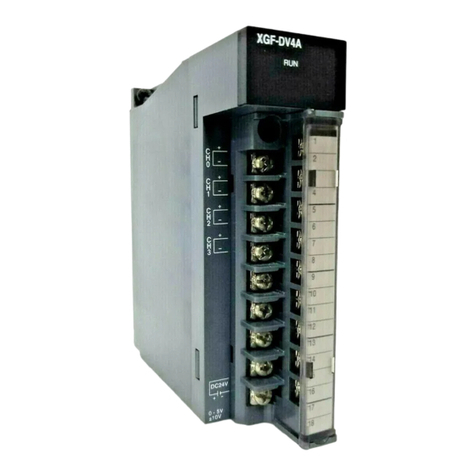
LS
LS XGF-DV4A installation guide

Marathon Electric
Marathon Electric DVR 2000E+ Installation, operation and maintenance manual
